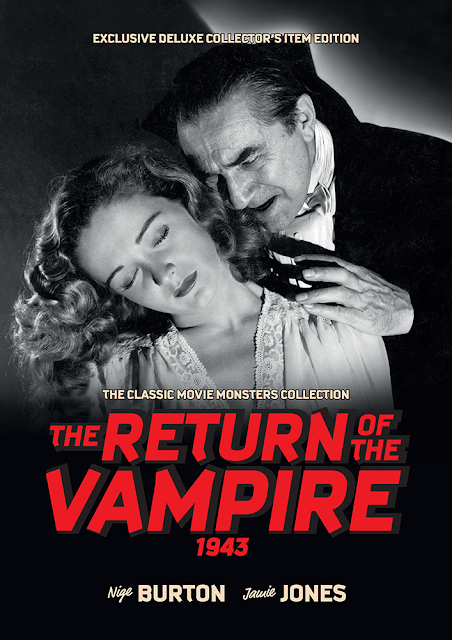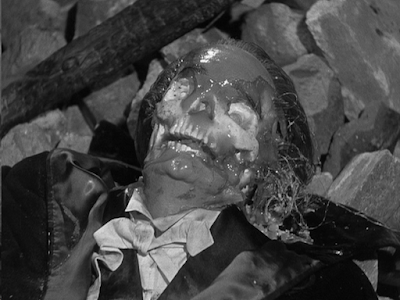Just as Augusto Caminito/Klaus Kinski's Vampire in Venice was once steered as a sequel to Werner Herzog's Nosferatu, the same applies to director Lew Landers' The Return of the Vampire, a 1943, British production that began as a sequel to Tod Browning/Bela Lugosi's Dracula.
Like Vampire in Venice, Return of the Vampire is, for all intents, a stand-alone, though as with the former, it doesn't take much to tweak one's view to draw a correlation between a stylish knockoff and its inspiration.
Writers/researchers Nige Burton and Jamie Jones are quite thorough in this Classic Monsters of the Movies edition, acknowledging Columbia Pictures' concern that Universal Studios might sue if a Return of Dracula entered production (considering Lugosi's link to the latter and of course, his most famous role), thus causing the Bram Stoker designation to be dropped.
Burton and Jones also discuss Return of the Vampire's cast, which the authors assess with mercurial opinion: Lugosi as the undead Armand Tesla; Matt Willis as his eloquent, werewolf-Renfield, Andreas Obry (brought to full-fur life by makeup artist, Clay Campbell); Frieda (The Alligator People) Inescort as the firm and empirical Lady Jane Ainsley; Roland Varno as the Jonathan Harker-ish John Ainsley, Nina (Cry of the Werewolf) Foch as the Mina/Lucy-ish Nicki Saunders; Gilbert (Dracula's Daughter) Emery as Van-Helsing surrogate, Dr. Walter Saunders (and Lady Jane's guide in the ways of the occult); Ottolla Nesmith as the doomed governess, Elsa; Miles Mander as the assiduous but cynical Sir Frederick Fleet; and as his fidgety backup, Leslie Dennison as Detective Lynch and William Austin as Detective Gannet.
The story, conceived by Griffin Jay, Randall Faye and Kurt Neumann, is well outlined and often excoriated by the authors.
As a helpful reminder, the movie starts with an eerie 1918 prelude, depicting Tesla's bloodthirsty stalks and ultimate destruction by Dr. Saunders' stake; then phases to a WWII bombing of Britain by the Nazis, which strikes Priory Cemetery, whereupon the vampire is disinterred from his tomb. Tesla soon charms those he meets, under the alias, Hugo Bruckner, but Lady Jane's suspicion unravels the aristocrat's secret. Meanwhile, Tesla reinstates his partner, Andreas, re-summoning his lycanthropy, but (as in the past) allows him to retain the means of speech (quite a revolutionary turn for the genre, unless one considers Werewolf of London). From there, grand, creepy mayhem unspools (churned in no small part by L. William O' Connell's chilling cinematography and Mario Casteinuovo-Tendesco's saturating score), as Tesla enslaves Nicki, culminating in a climax wracked by fear and betrayal.
In my estimation, Return of the Vampire holds its own with Universal's best, and it's easy to see how it inspired Edward D. Wood Jr.'s endearing, Lugosi offshoots. I give Burton and Jones credit for analyzing the movie, citing its high points and alleged slips. In the end (and no matter the critique), one will come away from their work appreciating this underrated gem. (FYI: As insightful bonuses, the authors present a short but satisfying Lugosi bio and flavor their text with trivia, quotes and gorgeous graphics, which make the package a cinema-buff essential.)
Purchase The Return of the Vampire tribute magazine at
https://www.classic-monsters.com/shop/product/the-return-of-the-vampire-1943-ultimate-guide-magazine/

















No comments:
Post a Comment